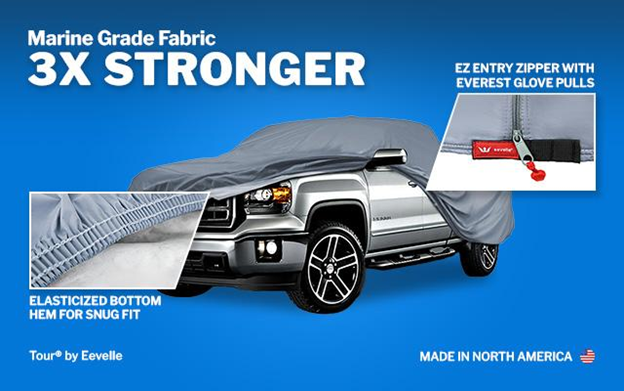Buying your first car is a big milestone—one that comes with equal parts excitement and anxiety. Whether you’re 18 and fresh out of driving school or 30 and finally ready to ditch public transport, this guide is designed to help you navigate the decision-making process with confidence.
The automotive world can be intimidating for beginners. Dealerships, financing, specs, insurance… it’s a lot. But don’t worry—we’re breaking it all down for you in simple, actionable steps. From figuring out what you really need to signing on the dotted line, here’s how to choose your first car like a pro.
Table of contents
1. Understand Your Needs and Budget
Before heading to a dealership or browsing online, you need to ask yourself one critical question: “What do I actually need from a car?” Not what looks cool, not what your friends are driving—but what fits your life.
Determine Your Driving Needs
Different lifestyles call for different vehicles. Here are some key questions to ask:
- How often will I drive? Is this a daily commuter car or just for weekends?
- How many passengers do I need to carry? Will you be solo most of the time, or regularly driving family or friends?
- What type of roads do I use? City streets, highways, or rural dirt roads?
- Do I need extra storage? Maybe for sports equipment, tools, or pets?
For example, a compact sedan might be perfect for city living, while a small SUV could better suit someone with a long commute or a more active lifestyle.
New vs. Used: What’s Right for You?
For many first-time buyers, the question of new vs. used comes down to budget and peace of mind.
Pros of Buying New:
- Manufacturer’s warranty
- Latest safety and tech features
- No previous wear and tear
- Lower interest rates on financing
Cons:
- Higher upfront cost
- Rapid depreciation (you lose value as soon as you drive off the lot)
Pros of Buying Used:
- Lower purchase price
- Slower depreciation
- Potential for a better car within your budget
Cons:
- Higher maintenance risk if not thoroughly inspected
- Limited or no warranty unless certified pre-owned
If you’re on a tighter budget, a certified pre-owned (CPO) vehicle is a great middle ground. These are used cars that have been thoroughly inspected and come with a manufacturer-backed warranty.
Set a Realistic Budget
Don’t shop before you know your financial limits. Your budget should include more than just the sticker price of the vehicle. Consider:
- Down payment: Aim for 10–20% of the total cost
- Monthly payments: Shouldn’t exceed 15–20% of your monthly income
- Insurance: Varies based on age, location, and car type
- Fuel and maintenance: Estimate based on MPG and reliability ratings
💡 Tip: Use online calculators to estimate monthly payments, including interest rates, taxes, and fees.
2. Research and Compare Vehicle Options
Now that you know your needs and your budget, it’s time to start looking at actual vehicles.
Choose the Right Body Style
Here’s a breakdown of common car types for beginners:
- Sedans: Ideal for commuting and affordability (e.g., Toyota Corolla)
- Hatchbacks: Great for city driving with flexible cargo space (e.g., Honda Fit)
- SUVs: Offer more space and all-weather capability (e.g., Mazda CX-5)
- Trucks: Not typically ideal for first-timers unless you need to haul regularly
Try to avoid flashy sports cars or oversized SUVs as your first vehicle—they can be expensive to insure and harder to handle.
Prioritize Practical Features
When choosing your first car, focus on practicality over luxury. Look for:
- Fuel economy: Aim for cars with 30+ MPG combined if driving daily
- Safety ratings: Check reviews from NHTSA and IIHS
- Reliability: Toyota, Honda, Mazda, and Subaru are known for longevity
- Low cost of ownership: Avoid high-end brands with expensive parts
Also, think about technology: Apple CarPlay, Android Auto, Bluetooth connectivity, and backup cameras are increasingly standard and can enhance your driving experience.
Narrow Down and Compare
Once you have a shortlist, compare models using:
- Kelley Blue Book (KBB)
- Edmunds
- Consumer Reports
- YouTube car review channels
Don’t just rely on marketing material—look for honest, real-world reviews from people who’ve driven the car long term.
3. Inspect and Test Drive Before You Buy
Even if the car checks all your boxes on paper, it’s crucial to see it in person and take it for a spin.
What to Inspect
For new cars, this step is mostly about checking the features. For used cars, be extra thorough:
- Exterior: Scratches, dents, rust, tire wear
- Interior: Seats, buttons, odors, seat belts
- Under the hood: Check fluids (oil, coolant), battery corrosion
- VIN check: Use Carfax or AutoCheck for vehicle history (accidents, ownership, recalls)
If you’re not car-savvy, bring a friend who is—or better yet, hire a mechanic to do a pre-purchase inspection. It might cost $100–$150 but can save you thousands.
Take a Proper Test Drive
This is your chance to see how the car actually feels on the road. During the test drive:
- Accelerate and brake at different speeds
- Test the steering, turning radius, and suspension
- Drive on different roads—highways, city streets, maybe even a bumpy road
- Try parking and reversing to gauge visibility and size
- Listen for any weird noises or vibrations
Ask yourself: Can I see myself driving this every day?
4. Finalize the Purchase with Confidence
Once you’ve picked the right car, it’s time to seal the deal. This step can be intimidating—but knowledge is power.
Know Your Financing Options
If you’re not paying cash, you’ll need to finance. Here are the main sources:
- Dealership financing: Convenient but may not offer the best rates
- Bank or credit union loans: Often have lower interest rates
- Online lenders: Easy to compare rates quickly
Shop around and get pre-approved before going to the dealership. This gives you negotiating power and protects you from inflated interest rates.
Understand the Paperwork
Here’s what you’ll need to complete the sale:
- Driver’s license
- Proof of insurance
- Loan documents (if financing)
- Vehicle title (if private sale)
- Bill of sale
- Registration forms
Dealerships will usually handle the paperwork, but in a private sale, make sure everything is properly transferred—including title and tags.
Don’t Be Afraid to Negotiate
Even on used cars, negotiation is expected. Do your research on fair market value and bring that data with you.
Tactics to use:
- Be polite but firm
- Mention any cosmetic flaws as bargaining chips
- Be ready to walk away if the deal doesn’t feel right
Sometimes, just pausing or saying “I need to think about it” can prompt a better offer.
FAQs: How to Choose Your First Car
1. What is the best car for first-time buyers?
Great beginner cars include the Toyota Corolla, Honda Civic, Hyundai Elantra, and Mazda3. They’re fuel-efficient, easy to drive, and affordable to maintain.
2. Should I buy a new or used car for my first vehicle?
Most first-time buyers benefit from buying used. You avoid steep depreciation and can get more car for your money. Just be sure to get a pre-purchase inspection and review the vehicle history report.
3. How much should I spend on my first car?
Try to keep the total cost—including loan payments, insurance, and maintenance—within 15–20% of your monthly income. As a rough guide, most first-time buyers spend between $5,000–$20,000 depending on their situation.
4. What are the most reliable first cars?
Brands known for reliability include Toyota, Honda, Subaru, and Mazda. Look for models with a strong track record for durability and low repair costs.
5. How do I avoid getting scammed when buying a car?
Protect yourself by:
- Requesting a Carfax report
- Getting a mechanic’s inspection
- Confirming ownership with a clean title
- Meeting in public places or safe zones
- Avoiding wire transfers or cash deals with strangers
Final Thoughts
Buying your first car is a major life decision—but it doesn’t have to be a stressful one. The key is to slow down, do your research, and stay within your means. Think of your first car as a stepping stone, not a forever purchase. You’re looking for reliability, safety, and practicality—not flash.
By understanding your needs, setting a smart budget, doing thorough research, and not skipping the test drive or inspection, you’ll be miles ahead of most first-time buyers.
And remember: the more prepared you are, the better deal you’ll get—and the more you’ll love driving your first car.




3 thoughts on “How to Choose Your First Car: A Beginner’s Guide”
yi22cx
t58wvp
4qd8nw